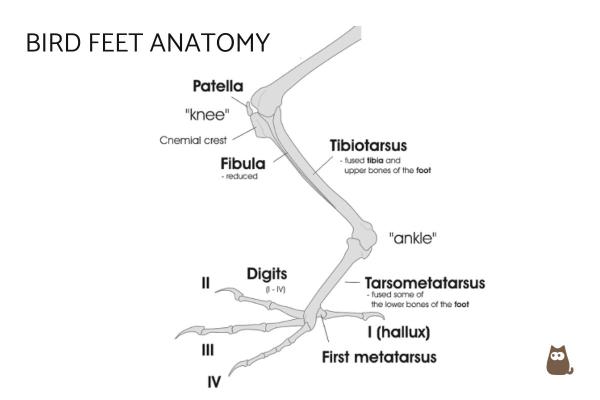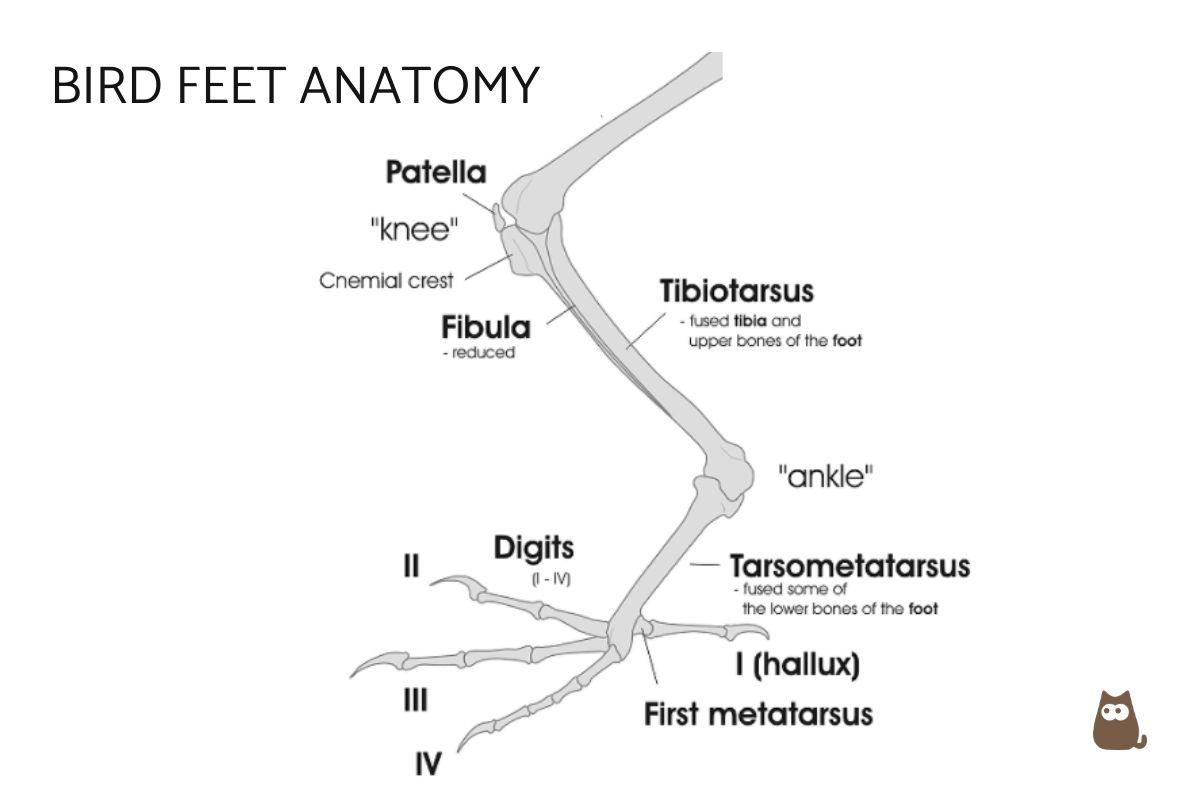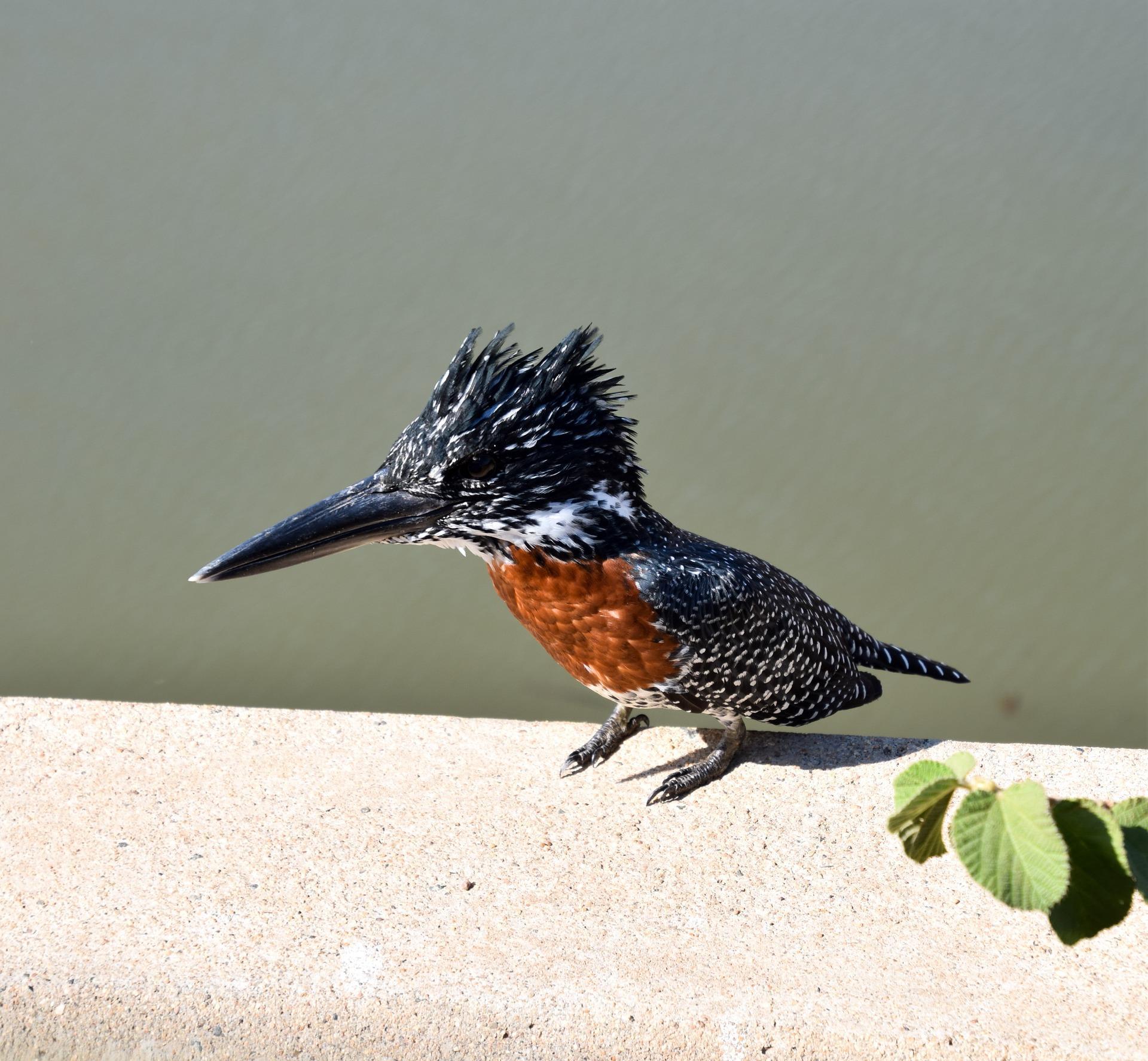Types of Bird Feet


There are different types of birds that live in different environments. For this, they will need useful feet that will help them survive in their natural habitat. Their type of feet needs to be able to help them hunt, climb, swim, etc., depending on their environment and needs.
In this AnimalWised article we are going to elaborate on the different types of bird feet and what they are useful for. We'll be sure to also include examples.
Characteristics and structure of bird feet
The body of birds have various adaptations that allow them to have so much breadth in their lifestyles. In this sense, the legs fulfill a very important function. Bird feet are adapted to the life they lead and are often used in avian classification.
The hind limbs are made up of the femur, which is relatively short in most birds. The part of the leg that is visible, that is, the part that does not have feathers, is composed of fused metatarsal bones (homologous with the foot of humans). This forms the tibiotarsus, which is the longest part of the leg.
Other bones follow and fuse to form the tarsometatarsus, where the toes of the leg meet. Birds have the peculiarity of walking on the tips of their feet due to the configuration of their fingers, so it can be said that they are digitigrade. The legs are attached to a strong assembly consisting of the pelvic girdle extensively fused with the uniform spinal bone (also specific to birds) called the synsacrum, built from some of the fused bones.
Most of them have four fingers, but some types of birds have three, with the first finger being the hallux. The ostrich (Struthio camelus) is the only living bird that has only two fingers. Those that have only three are generally some other ratites such as the rhea, the emu, the kiwis and some shorebirds such as plovers (order Charadriiformes), among others.

Types of bird feet
Whereas humans, and other primates, have the original five fingers and five toes, birds have only four toes. These four toes are arranged into four main patterns. However, there are some birds that have three toes. There is also only one bird, the ostrich, that has only two toes. We'll talk about that below.
This classification will, therefore, depend on the number of toes they have and their arrangement. Within each type, there are highly variable configurations among the different orders and families of birds, where each has a particular arrangement of fingers or other distinguishable characteristics. In addition, the nails or claws in which the toes end often reflect the habits of a bird. Next, we will explain the different configurations of the fingers and the types of legs present in birds.
Anisodactyly
This is the typical configuration of the leg of a bird. This type of bird feet has four toes in total where the hallux (first finger) faces backwards and the other three point forward. This arrangement is common in passerines (birds such as blackbirds, blue tit, sparrows, among others), in pigeons (Columbiformes), hawks (Falconiformes), among many other birds. They have a strong hallux that allows them to perch on the branches comfortably.

Zygodactyly
In this case, they have two fingers forward and two fingers back. Generally, the fourth finger along with the hallux are the ones that point back. This type of bird feet is found in cuckoos (cuculiformes), woodpeckers (Piciformes) and parrots (Psittaciformes), among others. It is also common in owls (Strigiformes), although it can vary within the group. Climbing species, such as woodpeckers, often have curved nails that help them hold on to irregularities in tree bark without compromising their ability to roost.

Heterodactyly
This type of bird feet is rare. These type of birds also have two fingers pointing back and two pointing forward, but in this case the back fingers are the second and the first. This arrangement is present in trogons (Trogoniformes) and also allows them to perch on tree branches, where they spend a lot of time perching.

Syndactyly
The birds that with this type of feet have the connected middle fingers, that is, the third and fourth fingers. This arrangement is similar to anisodactyly, except for the fusion of the fingers, it is typical of kingfishers, bee-eaters, northern caracara and related (Coraciiformes). There can also be a fusion of the three fingers in front, from the second to the fourth, as in the giant kingfisher (Ceryle alcyon). This type of leg allows them to perch on flat as well as cylindrical surfaces.

Pamprodactyly
In this case, all four fingers face forward, as in swifts (Apodiformes), including the first finger (hallux). This type of bird feet is only present in these birds and serves to hang them from branches or other structures, since they cannot perch or walk because their legs are very short.

Didactyly
Only ostriches have this type of bird feet. They have only two toes on each foot with the nail on the larger, inner toe resembling a hoof. The outer toe has no nail. The reduced number of toes is an adaptation to its life on open land. Ostriches can run at a speed over 43 mph and can cover 9.8 to 16.4 feet in a single stride.

Types of feet in birds: webbing and lobation
Other classifications also include the degree of development of interdigital membranes that can have the legs of the birds.
Palmate
This is the most common webbing in a bird's feet. In this type of bird feet, only the anterior digits (2–4) are joined by webbing. You can find this type of webbing in ducks, geese and swans, gulls and terns, and other aquatic birds (auks, flamingos, fulmars, jaegers, loons, petrels, shearwaters and skimmers). Diving ducks also have a lobed hind toe, and gulls, terns and allies have a reduced hind toe.
Totipalmate
In this type of webbing all four digits (1–4) are joined by webbing. You can find this in gannets and boobies, pelicans, cormorants, anhingas and frigatebirds.
Semipalmate
This type of webbing is when we can observe a small web between the anterior digits (2–4). This is found in some plovers (Eurasian dotterels) and sandpipers (semipalmated sandpipers, stilt sandpipers, upland sandpipers, greater yellowlegs and willet), avocet, herons (only two toes), all grouse, and some domesticated breeds of chicken. Plovers and lapwings have a vestigial hind toe (1), and sandpipers and their allies have a reduced and raised hind toe barely touching the ground. The sanderling is the only sandpiper having 3 toes (tridactyl foot).
Lobate
Lastly, lobate webbing is when the anterior digits (2–4) are edged with lobes of skin. Lobes expand or contract when a bird swims. In grebes, coots, phalaropes, finfoots and some palmate-footed ducks on the hallux (1). Grebes have more webbing between the toes than coots and phalaropes.

On the other hand, other traits can also characterize the legs of the birds. For example, species with more earthly habits, have long back claws with which they avoid sinking in mud, sand or other soft surfaces. In the case of jacanas (Charadriiformes), they are characterized by their anisdactyl legs with very long fingers and nails that allow them to move and walk along the surface of aquatic vegetation in shallow bodies of water.
Species such as herons (order Ciconiiformes) have the third finger nail as a "comb" , that is, the jagged edges, which is called a pectined nail, like other species such as the bell owl (Tyto alba), also has this type of nail, which in this case is used to groom and maintain feathers.
Be sure to also check out our article on what to do when you find an injured bird.

If you want to read similar articles to Types of Bird Feet, we recommend you visit our Facts about the animal kingdom category.
- Del Hoyo, J., Del Hoyo, J., Elliott, A., & Sargatal, J. (1992). Handbook of the birds of the world. (Vol. 1, No. 8). Lynx editions. Barcelona.
- Kardong, KV (2007) . Vertebrates: Comparative anatomy, function and evolution . McGraw Hill.













